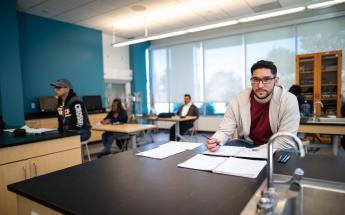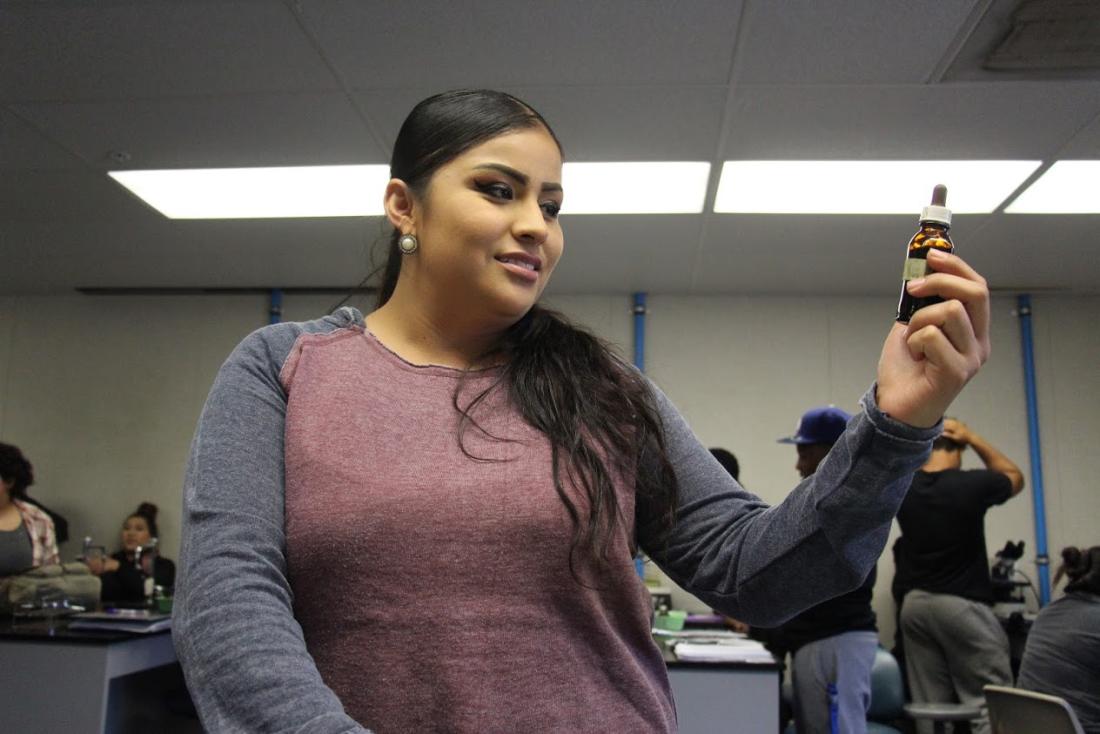Liberal Arts: Natural Science (AA)
Careers in Natural Science
Those who major in natural science have a huge selection of possible careers to choose from, with most being in the medical, health, and earth sciences. While some careers focus their scope inside a laboratory, most careers allow for independent or team research that’s in the field, as well. These careers need curiosity, logical reasoning, and critical-thinking skills to bring all these sciences together to problem-solve different situations.
Here are some careers and their salaries you could have with a liberal arts degree in natural science:
Career information below taken from bls.gov January 2020. Go to bls.gov for most current career information.
Organize and manage health information data.
Data for Los Angeles/Long Beach/Anaheim
| Typical Education Level: | Salary: | Hourly Median Wage: |
|---|---|---|
| Postsecondary Nondegree Award | $43,640/year | $20.98/hour |
| Work Experience in a Related Occupation: | Job Outlook 2018-2028: | Number of Jobs 2018: |
| None needed | 4% increase (as fast as average) | 7,890 |
Manage the overall land quality of forests, parks, rangelands, and other natural resources.
Data for Los Angeles/Long Beach/Anaheim
| Typical Education Level: | Salary: | Hourly Median Wage: |
|---|---|---|
| Bachelor’s Degree | $59,060/year | $28.39/hour |
| Work Experience in a Related Occupation: | Job Outlook 2018-2028: | Number of Jobs 2018: |
| None needed | -3% decrease (decline) | 200 |
Research ways to improve the efficiency and safety of agricultural establishments and products.
Data for Los Angeles/Long Beach/Anaheim
| Typical Education Level: | Salary: | Hourly Median Wage: |
|---|---|---|
| Bachelor’s Degree | $67,390/year | $32.40/hour |
| Work Experience in a Related Occupation: | Job Outlook 2018-2028: | Number of Jobs 2018: |
| None needed | 3% increase (slower than average) | 390 |
Combine knowledge of engineering and of health and safety to develop procedures and design systems to protect people from illness and injury and property from damage.
Data for Los Angeles/Long Beach/Anaheim
| Typical Education Level: | Salary: | Hourly Median Wage: |
|---|---|---|
| Bachelor’s Degree | $108,080/year | $51.96/hour |
| Work Experience in a Related Occupation: | Job Outlook 2018-2028: | Number of Jobs 2018: |
| None needed | 5% increase (as fast as average) | 1,020 |
Supervise the work of scientists, including chemists, physicists, and biologists.
Data for Los Angeles/Long Beach/Anaheim
| Typical Education Level: | Salary: | Hourly Median Wage: |
|---|---|---|
| Bachelor’s Degree | $122,540/year | $58.91/hour |
| Work Experience in a Related Occupation: | Job Outlook 2018-2028: | Number of Jobs 2018: |
| 5 Years or More | 5% increase (as fast as average) | N/A |
Develop, process, and test materials used to create a wide range of products.
Data for Los Angeles/Long Beach/Anaheim
| Typical Education Level: | Salary: | Hourly Median Wage: |
|---|---|---|
| Bachelor’s Degree | $107,960/year | $51.91/hour |
| Work Experience in a Related Occupation: | Job Outlook 2018-2028: | Number of Jobs 2018: |
| None needed | 4% increase (as fast as average) | 990 |
What You’ll Learn at LASC in Natural Science
You can get Associate in Science in Liberal Arts: Natural Science (AA) at LASC where you will learn and work with the fundamentals of the scientific method and study the complexities of the human body:
- By studying this program, you don’t have to pick just one science! Plus, natural science rarely stays in the classroom. Perform experiments in the field and collect specimens and data to bring back to observe and analyze.
- Gain knowledge and understanding of how the human body functions in our environment. Learn how diseases affect humans and the biology of infection.
- Use critical thinking, logic, and experiments to connect ideas, studies, and other materials from an array of sciences in order to present solutions to complex problems.
- LASC provides internships so you can build your career connections and create community ties for after you graduate.
- Want to transfer? With your Associate in Arts in Liberal Arts in Natural Science (AA) degree, you will save money on your first two years of college at LASC learning from pioneering, attentive faculty before you transfer to a four-year college or university. Visit your counselor to fund out more.
Degrees & Courses You Will Take
Review LASC’s Liberal Arts degree in Natural Science and our suggested course of study for this program. Go to LASC’s current Course Catalog for specific course information:
Major Code: 4901.04
Total Units Required: 60
You can transfer into a four-year college or university taking the Liberal Arts degree program in Natural Science at LASC! Your first step is to talk with your academic counselor to find out exactly what you will need to do to transfer.
Once you successfully complete this program, you will be able to:
- Apply the scientific method to solve a problem.
- Comprehend and evaluate content relating to human body structure, function, and disease.
| Core Courses (Choose & complete 18 units) | Units |
|---|---|
| BIOLOGY 3 Introduction to Biology | 4 |
| BIOLOGY 5 Introduction to Human Biology | 4 |
| BIOLOGY 6 General Biology I | 5 |
| BIOLOGY 7 General Biology II | 5 |
| ANATOMY 1 Introduction to Human Anatomy | 4 |
| AND | |
| PHYSIOL 1 Introduction to Human Physiology | 4 |
| OR | |
| BIOLOGY 20 Human Anatomy and Physiology | 8 |
| CHEM 51 Fundamentals of Chemistry I | 5 |
| CHEM 101 General Chemistry I | 5 |
| CHEM 102 General Chemistry II | 5 |
| GEOLOGY 1 Physical Geology | 3 |
| GEOLOGY 6 Physical Geology Laboratory | 2 |
| MICRO 1 Introductory Microbiology | 5 |
| PHYSICS 6 General Physics I | 4 |
| PHYSICS 7 General Physics II | 4 |
| PHYS SC 1 Physical Science I | 3 |
| PHYS SC 14 Physical Science Laboratory | 1 |
| TOTAL UNITS | 18 |
Get Ready Before You Start
If you want a career in natural science, you can start preparing for it before your first class starts at LASC:
- Make an appointment with your LASC academic counselor to review LASC’s program, start to develop a Student Education Plan (SEP), and discuss your career goals. You can talk with your counselor to see if transferring to a four-year college or university might be the best fit for your academic path.
- Still in high school? Find out if there are any nearby universities or colleges with summer science programs for high school students, contact public agencies to see if they are offering high school internships, and start a Science Club at your high school.
- Once you’re at LASC, make sure to get involved with off- and on-campus clubs and organizations, such as the Anthropology Club and Toastmasters, or become a student ambassador, or run for student body government. These create new relationships and show potential employers your commitment to building leadership skills, broadening your skills, and getting to know your community.
Program Learning Outcomes

As a student, once you successfully complete the program, you should be able to:
- Apply the scientific method to solve a problem.
- Comprehend and evaluate content relating to human body structure, function, and disease.
